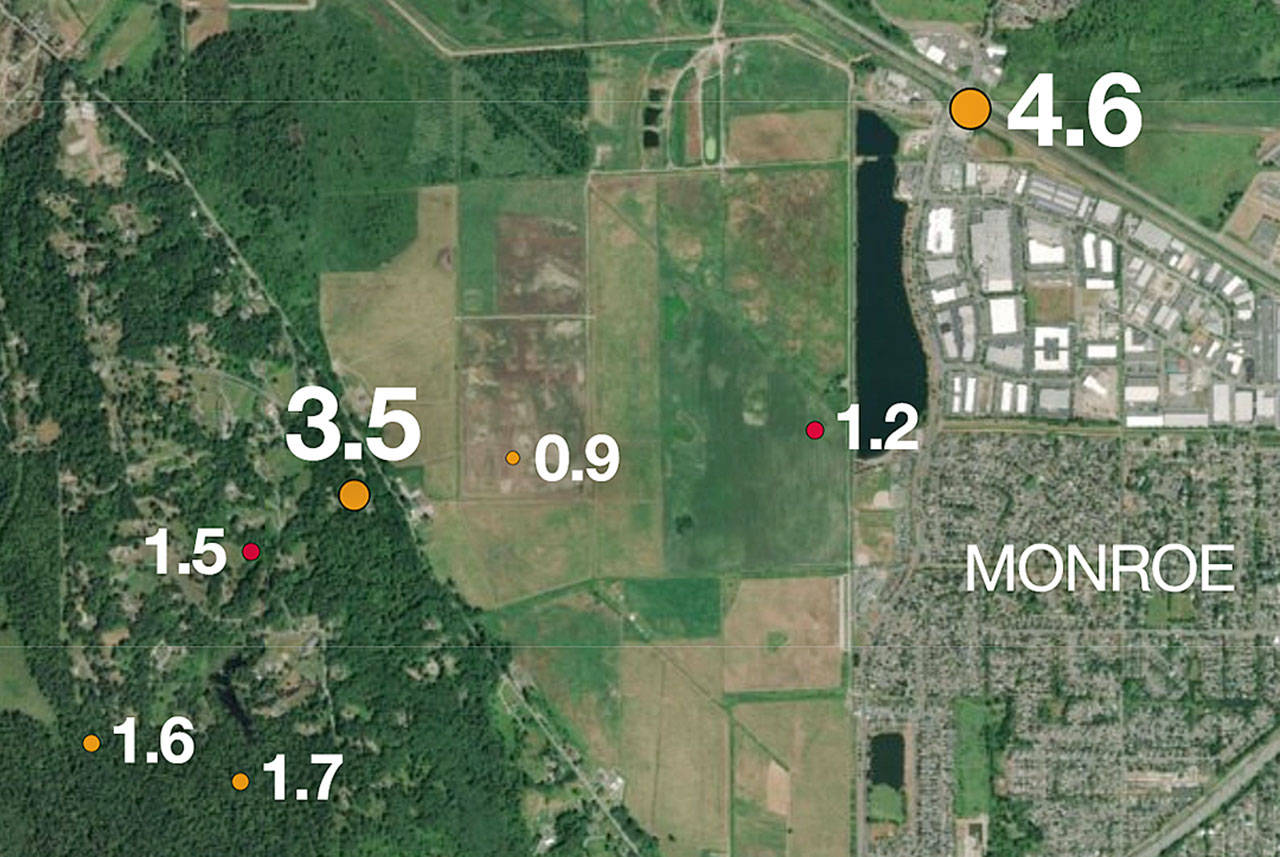MONROE — The magnitude 4.6 Monroe earthquake felt by thousands of Puget Sound-area residents in July is helping scientists assess how future quakes will impact the region.
The relatively tame event was serendipitous for a group of scientists from Harvard, the University of Washington and the Pacific Northwest Seismic Network.
Just over a week before the earthquake hit, the group placed seismometers throughout the Seattle-Tacoma area to record how background noises like traffic or swaying trees interacted with the area’s geology.
The scientists planned to study the Seattle and Tacoma sedimentary basins — depressions filled with soft sediment, rather than rock — to learn more about how they’re shaped.
But when the Monroe earthquake hit, they got more data than they bargained for.
Seattle, Tacoma and Everett all lie within some of Puget Sound’s largest basins. These areas magnify how much the ground shakes in an earthquake.
“You can think of a basin as a bowl of Jello-O,” said Alex Hutko, a project lead with the Seismic Network.
If the bowl is shaking, the stack of Jell-O inside it shakes even more.
Everett’s basin is centered under Hat Island in Possession Sound and extends north to Marysville, east to Granite Falls and west past Whidbey Island.
With the data retrieved during the Monroe earthquake, U.S. Geological Survey geophysicist Erin Wirth said scientists are now able to study just how much basins amplify ground shaking.
The amount a basin increases shaking is the same regardless of an earthquake’s magnitude, so the data will help them determine how future, bigger quakes will impact Puget Sound’s urban areas, Wirth said.
But each basin is unique. The Seattle Basin won’t magnify shaking the same way Everett’s will.
Scientists are still combing through the data, and results won’t be published for months to a year. In the meantime, Wirth said, they’re learning just how crucial it is to know how urban basins will respond to larger-magnitude earthquakes.
The amplification will affect tall structures the most, she said, so the research could inform how buildings are built to withstand shaking.
“This has driven home the need to have these (instruments) in these basins permanently,” Wirth said.
Julia-Grace Sanders: 425-339-3439; jgsanders@heraldnet.com.
Talk to us
Please share your story tips by emailing editor@kentreporter.com.
To share your opinion for publication, submit a letter through our website https://www.kentreporter.com/submit-letter/. Include your name, address and daytime phone number. (We’ll only publish your name and hometown.) Please keep letters to 300 words or less.

